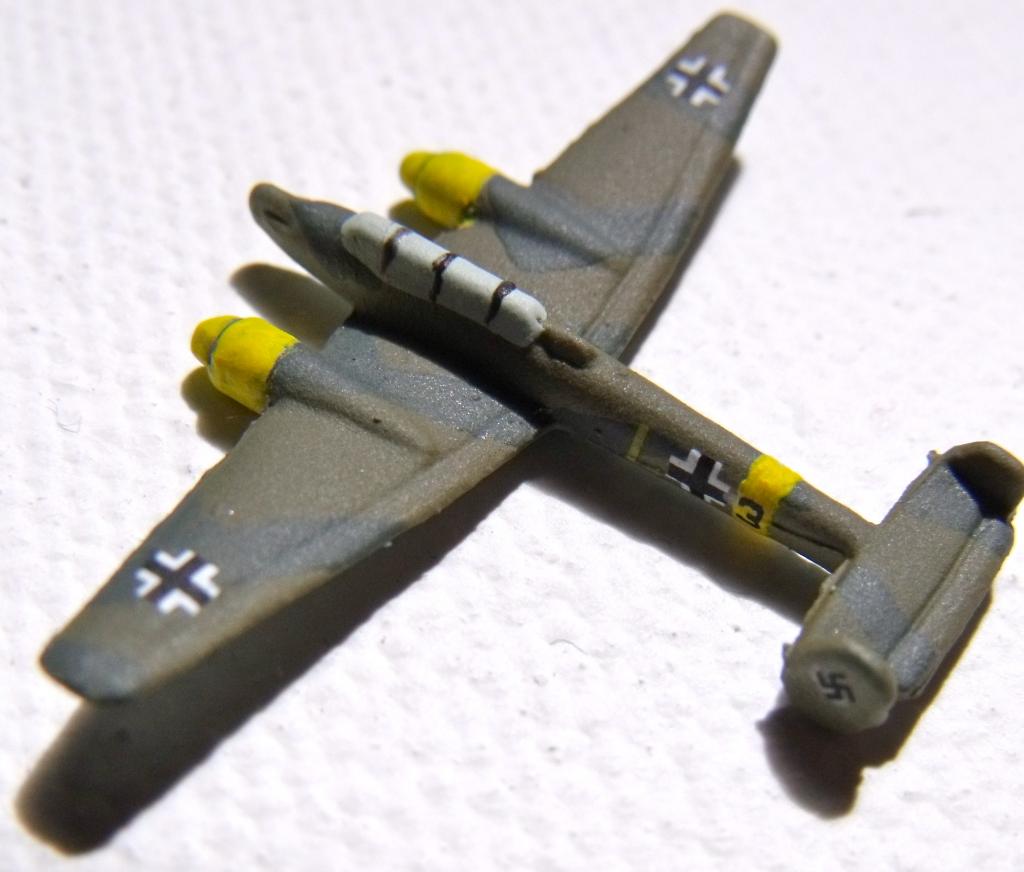Do you see the +1 Bonus Move for aircraft leaving an Airbase in an island very relevant in the Pacific Theatre of Operation (PTO)?
It never plays the role of an unsinkable (& immobile) aircraft carrier, as some admiral said.
An unsinkable aircraft carrier is a term sometimes used to refer to a geographical or political island that is used to extend the power projection of a military force. Because such an entity is capable of acting as an airbase and is a physical landmass not easily destroyed, it is, in effect, an immobile aircraft carrier that cannot be sunk and cannot be moved.
The term unsinkable aircraft carrier first arose during World War II, to describe the islands and atolls in the Pacific Ocean which became strategically important as potential airstrips for American bombers in their transoceanic war against Japan. To this end, the US military engaged in numerous island hopping operations to oust the occupying Japanese forces from such islands; afterwards the US Navy Seabees would often have to construct airstrips there from scratch sometimes over entire atolls quickly, in order to support the air operations against Japan.
Malta was sometimes described as an unsinkable aircraft carrier during World War II, making it a target of the Axis powers. The US military is said to have considered Taiwan since the Chinese Civil War, and the British Isles and Japan during the Cold War, as unsinkable aircraft carriers
http://en.wikipedia.org/wiki/Unsinkable_aircraft_carrier
From a game-play point of view, you don’t see the need to invade Iwo Jima or Okinawa and to build any airbase for Fighters and Tactical bombers to bring them near Japan since, anyway, they won’t be able to reach it and come back. It is still 3 spaces away to reach and another 3 to come back on the island. StB can make Strategic Bombing Raid (SBR) or Tactical Bombing Raid (TBR) without any Airbase bonus move. But they will never be escorted unless you bring… carriers!!!
Then, you come to the same solution as usual.
Bring aircraft carriers in Okinawa or Iwo Jima SZ: they will protect the fleet and will be able to attack Japan from another SZ away and Fgs on them will be able to escort StBs flying from those islands without any help from airbase.
And you can say this about all islands which have also an island as neighbour only 1 SZ away but 3 spaces for any aircrafts starting from one island, thus forbidding any Fighter or TcB air support from any AirBase near-by. The Bonus Move gives nothing, so why bothering building any Airbase (15 IPCs) instead of a moving airbase: carrier (16 IPCs)?
The only solution, to save the “historical point of view” and give much more strategical options, is to treat Fighters and TcBs on AirBases in PTO islands as aboard a carrier in SZ for movement allowance.
When moving out from an AB without returning to home-base island, it will give only the +1M bonus. It remains the same effect for Ftg and TcB as stated in the AirBase OOB description.
And keep OOB rule for StB.
(Anyway, they don’t need this additional +1 movement point to make a SBR from one island to another in the near SZ.)
Now, Fgts and TcBs will be able to provide air cover and air support during an amphibious assault on near-by AB without always using aircraft carriers.
For example, Palau island (Sz 34) (Peleliu Airfield) could be invade in the intent of preparing a greater air support (with Fgs/TcBs not just StB) for the invasion of Philippines Islands (SZ 35) as history said.
For historical references:
After a long campaign of island hopping, the Allies were approaching Japan, and planned to use Okinawa, a large island only 340 mi (550 km) away from mainland Japan, as a base for air operations on the planned invasion of Japanese mainland (coded Operation Downfall).
The Battle of Iwo Jima (19 February � 26 March 1945), or Operation Detachment, was a major battle in which the United States Armed Forces fought for and captured the island of Iwo Jima from the Japanese Empire. The American invasion had the goal of capturing the entire island, including its three airfields, to provide a staging area for attacks on the Japanese main islands.
Given the number of casualties, the necessity and long-term significance of the island’s capture[31] to the outcome of the war was a contentious issue from the beginning, and remains disputed. As early as April 1945, retired Chief of Naval Operations William V. Pratt stated in Newsweek magazine that considering the "expenditure of manpower to acquire a small, God-forsaken island, useless to the Army as a staging base and useless to the Navy as a fleet base … [one] wonders if the same sort of airbase could not have been reached by acquiring other strategic localities at lower cost."[3]
Pratt did not know, or else could not disclose, that the island’s emergency landing field would be useful for the B-29s carrying the atomic bombs destined for Japan in late 1945. The 509th Composite Group practiced mock emergency landings on Iwo Jima at its Utah base opened in December 1944.[32] B-29s were not entirely reliable, and engine failure was common. Due to the scarcity of materials and engineering complexity, replacement of the bombs could take many months or even years. However, Okinawa had also been taken by the time the bombs were dropped.
[…]
The traditional justification for Iwo Jima’s strategic importance to the United States’ war effort has been that it provided a landing and refueling site for long-range fighter escorts. These escorts proved both impractical and unnecessary, and only ten such missions were ever flown from Iwo Jima.
http://en.wikipedia.org/wiki/Battle_of_Iwo_Jima








